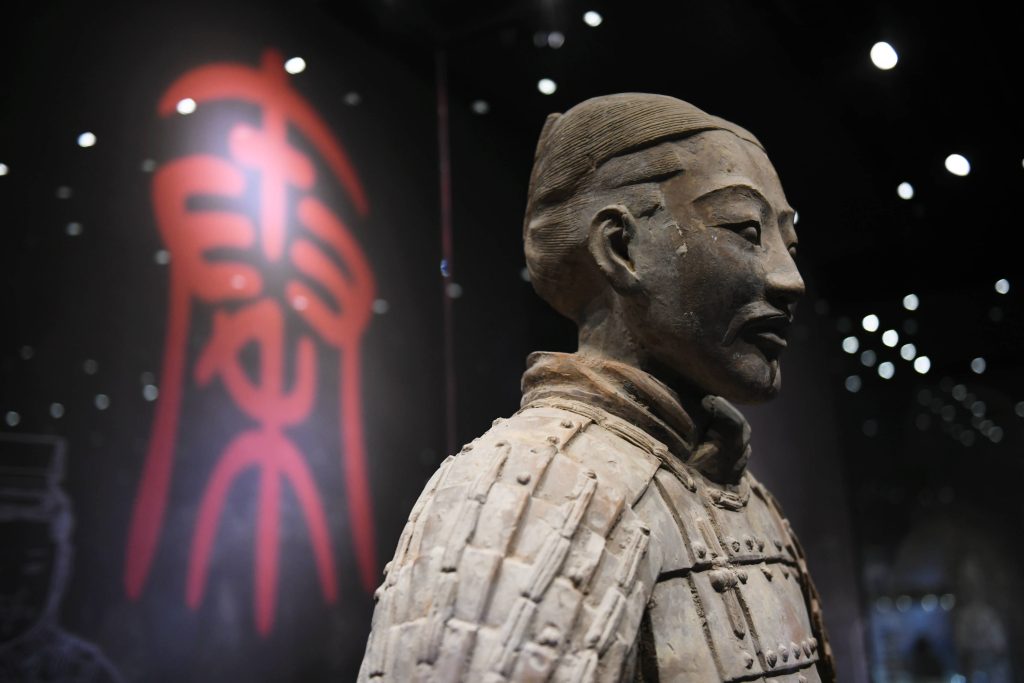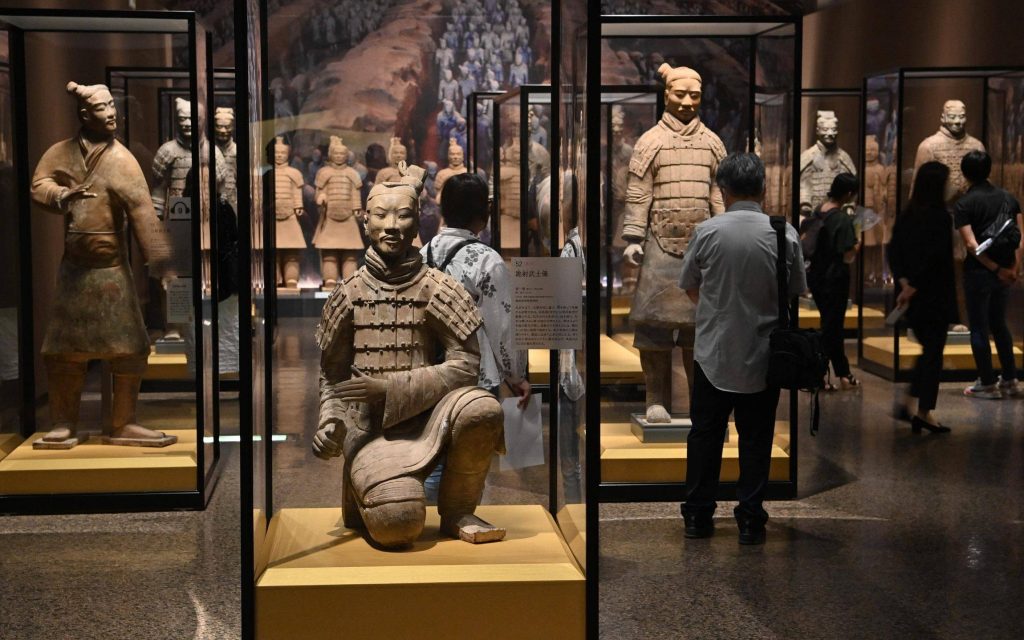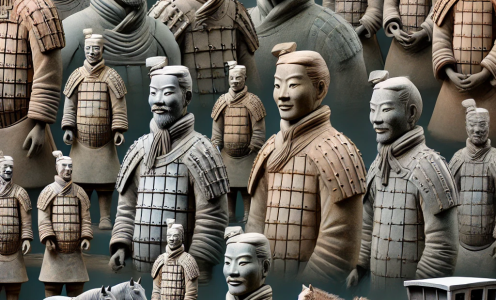How might I avoid throngs when seeing the Terracotta Warriors? 😮
Discovered in 1974 close to Xi’an, China, the Terracotta Warriors are among the most amazing archeological relics found anywhere. Created nearly 2,200 years ago to protect Emperor Qin Shi Huang in the hereafter, this great subterranean army of life-sized clay soldiers, horses, and chariots was… Millions of people visit this UNESCO World Heritage Site every today, thus crowd control becomes a major issue for those looking for a more personal and meaningful experience.
Although the site is rightfully popular, the steady influx of visitors might occasionally take away from the breathtaking beauty of this ancient wonder. Large gatherings can obscure view, produce noise that disturbs the meditative environment, and complicate shooting. Fortunately, insider knowledge and strategic planning help one to see the Terracotta Warriors with less audience and more respect. This thorough guide provides doable plans to help you get away from the crowds and savor a more serene visit to this remarkable historical gem.

Clarifying the Popularity of the Terracotta Warriors 🤔
Knowing why the site draws so many people helps one appreciate crowd-avoidance techniques. Comprising nearly 8,000 men, 130 chariots, 520 horses, and 150 cavalry horses—each with distinct face traits and expressions—the Terracotta Army is made of… One of China’s most visited attractions is this great scale together with the amazing workmanship and historical relevance.
Three main excavation pits contained in big protective structures make up the museum complex, with an exhibition hall featuring two bronze chariots and other objects. Usually drawing the largest crowds, Pit 1, the largest, consists of the major army of infantry and cavalry formations. Though smaller, Pits 2 and 3 feature significant aspects including chariots, high-ranking officials, and what looks to be a command station.
Considering this design, let’s investigate how to negotiate this amazing site with least possible audience exposure.
Ideal Visits: Seasonal Considerations 📅
Off-Peak Seasons
Smart tourists can take advantage of the regular seasonal patterns of the tourism flow to the Terracotta Warriors.
Spring (March to May) presents a perfect venue for guests. Usually ranging from 10 to 25°C (50 to 77°F), the weather is mild and pleasant. As schools are in session, March and early April see less domestic visitors; yet, the scene comes alive with spring blossoms. But steer clear of the Qingming Festival, usually early April, when many Chinese people go to honor their ancestors.
“I visited mid-March last year,” says Shanghai photographer Zhang Wei. “The site was remarkably uncrowded, especially in the mornings. I could take unobserved photos and really appreciate the details of the warriors without feeling rushed.”
Autumn (September through November) offers still another great window for travel. The summer heat disappears, humidity lowers, and often clear, blue sky are perfect for shooting. Particularly September weekdays can provide a break from congestion as domestic travel reduces following the summer break.
Particularly in January and February outside of Chinese New Year, Winter (December to February) shows the lowest tourist counts. Although the temperature can dip to about 0°C (32°F), the indoor character of the primary shows that your experience will not be much affected by weather. Braving the cold can be worth it given the substantial drop in guests during this season.
“The site was almost empty when I visited in late January,” notes German history professor Thomas Schmidt. “Just remember to dress warmly as the exhibition halls are not well-heated. I had entire sections of Pit 1 to myself at times, which created almost mystical atmosphere.”
Times to Steer Clear of

Some periods of year show significant increases in visitor count; so, if at all feasible, avoid those times:
As hundreds of millions of Chinese people travel during the week-long celebration, Chinese New Year (January/February) delivers the biggest annual human migration worldwide. During this time the Terracotta Warriors became rather packed.
Another big holiday when domestic tourism rises is Chinese National Day Golden Week (October 1–7). This week, visitor counts at the Terracotta Warriors could increase, resulting in packed viewing conditions and long queues.
Summer vacation (July and August) welcomes Chinese families with school-age children as well as foreign visitors. Peak travel combined with Xi’an’s hot, humid summer (typically above 30°C/86°F) makes this a particularly difficult period to visit.
You should also be aware of certain holidays including:
Labor Day (May 1–5).
The Dragon Boat Festival, generally in June, varies.
Festival of Mid-Autumn (September or October)
Optimal Days and Times ⏳
Weekends against Weekdays
Weekend and weekday crowds differ in really significant ways. On Saturdays and Sundays, local visitors from Xi’an and adjacent provinces typically cause notable crowd surges. Plan your visit for a Tuesday, Wednesday, or Thursday when both domestic and international tour groups are usually at their lowest counts if your calendar permits.
Ideal Hours for Traveling
Though hours vary periodically, the Terracotta Warriors Museum is normally open from 8:30 AM to 5:30 PM (March to November) and from 8:30 AM to 5:00 PM (December to February). Your experience can be much enhanced by strategic timing inside these working hours:
Early morning (8:30 AM – 10:00 AM) is the best chance to see the sight before most tour groups show there. Given many tour buses don’t arrive at the site until around 9:30 AM, the first hour following opening is very worthwhile.
“I arrived at 8:15 AM, fifteen minutes before opening, and was among the first twenty people to enter,” American visitor Michelle Parker notes. “For almost 45 minutes, I had amazing, unbroken views of the warriors. By 10:00 AM, the difference was dramatic as hundreds of visitors poured in.”
Late Afternoon (3:00 PM – Closing) might also provide respite from the noon congestion. Many tour companies leave by mid-afternoon to return to Xi’an or visit other sites and run strict itineraries. Though you will have to be careful with the time to view everything before being asked to leave, the hour before closing usually sees the fewest visitors.
When at all possible, avoid Midday (11:00 AM – 2:00 PM) as this time typically shows the largest visitor concentration. Usually arriving in waves throughout these hours, tour busses cause congestion on viewing platforms and at gates.
Ticket and Entrants Strategies 🎟️
Purchase Advance Ticket
Buying tickets ahead of time will help you avoid one of the most annoying crowd experiences—waiting in long ticket lines—and save important time. There are several ways you could get tickets before your trip:
Tickets can be bought ahead of time using Online Booking Platforms such Ctrip, Fliggy, or the official Xi’an tourism website. Although certain hotels and travel firms can help foreign guests with the process, many of these sites may need Chinese language abilities or a Chinese payment method.
Usually, pre-arranged tickets are part of Tour Operators‘ packages. Some operators provide “ticket-only” services that could be valuable for the time saved even if you do not want a whole guided tour.
Sometimes at the same cost as on-site purchase, Hotel Concierge Services in mid-range and premium hotels in Xi’an frequently offer ticket buying services for visitors.
Fast-Track Entry choices
Certain specialist tour companies provide “VIP,” or “fast-track,” admittance policies that sidestep the primary entrance lines. Although they are more expensive than regular tickets—usually 50 to 100 percent more—they can be worth it at busy times when admission lineups can run an hour.
“We paid additional for a fast-track service and visited during Golden Week,” says Beijing visitor Liu Mei. “While it felt expensive at the time, watching others wait in the blazing sun for almost 90 minutes then we entered almost immediately made it worth every yuan.”
StrategicSite Navigation 🗺️
Your crowd experience will be much improved if you know the Terracotta Warrior complex’s layout and can thus plan your path.
Unconventional Route
Most guests move over the venue in a predictable manner, which concentrates the crowds in specific areas. Often by choosing a different path, you will find yourself either momentarily ahead of or behind the main tourist flow.
Most tour companies use this classic route: Exhibition Hall → Pit 3 → Pit 2 → Pit 1.
Consider this instead: Pit 1 (early) → Exhibition Hall → Pit 3 → Pit 2.
Starting early in the morning at Pit 1—the biggest and most striking—you may see the major draw before most of the guests arrive. This strategy stresses quality of experience over narrative flow, therefore defying traditional wisdom that advises preserving the “best for last”.
“I headed straight to Pit 1 when the site opened, ignoring the smaller exhibitions temporarily,” Australian history buff James Wilson notes. “For about forty minutes, I had reasonably clear views and could take excellent photos. When I returned to the smaller pits later, they were busy but manageable—and I’d already seen the main highlight under ideal conditions.”
Approaches of Viewing Inside Pits

Every pit features several viewing platforms and paths of access. While the remote ends may remain less crowded, most guests concentrate around the access points and central viewing areas.
Enter Pit 1 and straight forwardly proceed to the far end (north side) before starting your viewing. Work your way back against traffic towards the door. Though many guests don’t make it that far before turning back, the fighters at the further end are equally amazing.
Though there are less viewing choices in Pits 2 and 3, the same idea holds: start with the furthest viewing point first then work backwards.
Photographical Issues 📸
Crowd control becomes much more important for photographers. Think about these specific pointers:
Elevated Positions: The observation platforms around Pit 1 have somewhat various heights. Often, the somewhat higher positions offer better viewpoints for photos across the heads of other guests.
Watch the flow of tour groups and be ready to occupy great viewing spots during the little pauses between them.
A camera with a zoom lens lets you record details from a distance, therefore lessening the need for front-row competition.
Alternative Experiences and Undercover Treasures ✨
Although the three main pits naturally attract the greatest attention, the Terracotta Warriors complex provides other activities that usually get much less visits.
The Qin Shi Huang Mausoleum
Though its historical importance is great, Emperor Qin Shi Huang’s actual tomb mound gets significantly less visitors than 1.5 km from the Terracotta Warriors Museum. The surrounding park area gives background on the emperor and the larger necropolis complex, even if the tomb itself is still unexcavated (partially due of issues about harming its contents).
“Most visitors miss the real tomb and concentrate just on the warriors,” says archeologist Dr. Li Jian, who has worked at the site. “The mausoleum area helps visitors realize that the warriors are only one component of a large imperial necropolis and presents a more peaceful experience.”
On- Site Museums and Exhibits
The complex’s other smaller exhibition galleries highlight objects and offer historical background. Usually, these places see less foot activity:
Two amazing half-sized bronze chariots found close to the tomb are housed at The Bronze Chariots Museum. Often less attention is paid to these masterpieces of ancient metallurgy than to the soldiers themselves.
Including tools, techniques, and difficulties experienced by archaeologists, The Archaeological Exhibition Hall offers the history of the site’s discovery and excavation procedure. This amazing area hardly ever sees notable crowds.
Archaeological Sites Not far apart
For those more interested in the Qin Dynasty, some nearby linked sites provide rich historical background with substantially lesser attendance:
Lishan Garden has many Qin Dynasty antiquities and provides nice strolling paths with significantly less traffic than the principal Terracotta Army location.
Emperor Qin and many later kings used Huaqing Palace (Huaqing Hot Springs), at the base of Mount Li. Though popular in and of itself, it hardly ever encounters the kind of large gatherings observed at the Terracotta Warriors.
Advice for a Perfect Visit 👍
Beyond schedule and travel plans, several pragmatic factors can improve your experience and enable you to more successfully negotiate crowds.
Plans of Transportation
Your capacity to apply best timing techniques may depend on your approach to reach the site:
Private Transportation gives the most flexibility so you might arrive exactly when the site opens. Though be advised that driving in China requires a Chinese driver’s license or international driving permit, taxis, private drivers, or rental automobiles can be booked in Xi’an.
Though it is reasonably priced, Public Bus (Tourist Bus Line 5 from Xi’an Railway Station) has a set timetable that could not coincide with best arrival times. Usually leaving at 7:00 AM, the first bus arrives at the site in around sixty minutes.
Some firms offer Tour Bus Transportation Only, which offers just the round-trip travel free from guided services. This choice offers the flexibility to explore on your own together with the ease of planned transportation.
Basic Things to Bring
Good planning will enable you to stay self-sufficient and comfortable during your visit:
Water and Snacks: Although there are on-site refreshments, their excessive pricing entail standing in extra queues when bought. Bringing your own supplies lets you stay in the display spaces for more time. 🥤🍎
Comfortable Shoes: The whole circle of the museum complex requires a lot of hard surface walking. Good shoes help avoid tiredness that can shorten your visit. 👟
If you use your smartphone for audio tours or photos, battery drain can be really noticeable. A portable charger guarantees you won’t forget recording significant events. 🔋

Human vs. Audio Guides
Available at the entrance for about forty RMB, Audio Guides provide information without you having to stay with a group. This adaptability lets you get historical background even when you can avoid congested regions.
Often with extra features like maps and suggested paths, mobile apps like “China Guide” or dedicated Terracotta Warrior apps provide same advantages to official audio guides. Download and test these before your trip; site internet access can be erratic.
If skilled, Private Guides can actually assist with crowd control. Time your movements to avoid the biggest tour groups and position yourself best inside each exhibition room using a local guide with knowledge.
“My guide seemed to have a sixth sense for crowd movements,” notes Canadian visitor Sarah Johnson. “She would suddenly suggest we move to a different viewing area, and minutes later a big tour group would arrive where we had been standing. This happened too often to be coincidence.”
Psychological Methodologies for Mass Audiences 🧠
You will probably run across some crowds on your trip, even with ideal preparation. These psychological techniques can enable you to keep enjoying even in front of others:
Conscious Attention
Instead of trying to observe everything at once, concentrate especially on particular soldiers or aspects. Even in packed areas, this “slow viewing” strategy can foster intimacy. Spend time seeing the particular facial expressions, armor details, or figure arrangement.
Changing Viewpoint
Remember that the throngs themselves reflect something good—world respect for this amazing cultural gift. Seeing other guests as fellow appreciators instead of challenges will help you to change your emotional experience.
Versatility and Patience
Accept that crowds may make certain viewing points momentarily inaccessible. Instead of being annoyed, go somewhere else and come back later when things have changed.
Chen Wei, a regular tourist who organizes cultural trips, notes numerous guests hurrying from highlight to highlight pushing through crowds with obvious irritation. “Those who approach the site with patience and adaptability always have a more satisfying experience, independent of visitor count.”
Specific Thoughts for Photographers 📷
These specific techniques can enable visitors mostly interested in photography to capture striking photographs even among crowds:
Methodical Approaches Technical
To get a shallow depth of field with a wide aperture (low f-number), use Aperture Priority This keeps your subject clear while blurring distracting backdrop crowds.
Sometimes Elevated Angles fly above the heads of other guests. Composing images from above the crowd is made possible with a tilting screen camera.
Frame selectively to cut out additional guests and contemporary items. Tight compositions emphasizing on individual fighters or details might give the sensation of a private viewing experience.
Timing in Light Quality
Though there are minor variations, the inside illumination in the exposition halls is rather steady all day.
As morning light comes in via Pit 1’s eastern windows, it often seems to be rather more diffused and significantly warmer.
Although Midday Light is more consistent, from above illumination it can produce stronger shadows.
Late afternoon light from western windows can provide the warriors in various parts of Pit 1 dramatic side-lighting.
Though minor, these lighting changes can be significant for photographers in the professional business looking for ideal settings.


